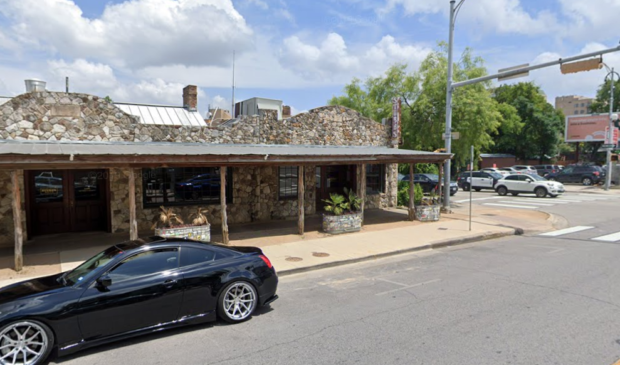City moving forward with improvements to Red River district
Tuesday, June 30, 2020 by
Chad Swiatecki The city’s long-planned improvements to the streetscape of the Red River Cultural District will move forward through the summer with planning and budgeting for construction projects to improve the sidewalks and other features of the area.
A recent city memo outlines progress on the Red River improvements, including the installation of 10 trash containers throughout the district, a study by Austin Energy that found no additional lighting is needed, and completion and approval of a design scope for the public works projects that will address the safety and accessibility of sidewalks.
Still to be determined is how much the other desired improvements will cost, and how they could be paid for if the total budget is forecast to exceed the $1.3 million allocated by the city.
The safety and overall aesthetic of the district has been a source of complaints from business owners for years, with the presence of drug dealing and prostitution in an alleyway north of Seventh Street creating a poor environment for patrons of the many bars and music venues in the area. The proximity of the Austin Resource Center for the Homeless nearby has created other concerns that the city has tried to address as well.
Last year the city installed a fence in front of the troubled alley, which was also cleaned and repaved.
Business owners and music advocates say more work is needed to help the prospects for music venues that remain in business and plan to reopen after the Covid-19 pandemic ends and public gatherings are allowed again.
“There’s still a ton of work that needs to be done. Look, we’ve got trash cans and we’ve got the gate on an alleyway that should have been handled a long time ago,” said Ryan Garrett, general manager of Stubb’s restaurant and music venue and co-owner of the former Beerland club. “I’m grateful that project is done, but that took seven years to complete if not longer. Do I consider the installation of trash cans and a gate a monumental improvement? No.”
Garrett said the condition of the sidewalks and streetscape throughout the district give it a poor image for visitors, especially during large gatherings such as Austin City Limits and South by Southwest when thousands of tourists visit businesses on Red River.
“I look at the condition of our curbs and our sidewalks and the general aesthetic down there and there’s a tremendous amount of work to be done,” he said. “For whatever reason that continues to get held up, and that fortifies the sentiment that Red River is lost with regard to the effectiveness of the city to upgrade that neighborhood and its accessibility.”
The Red River district’s proximity to the Waterloo Greenway parks system, Dell Medical School and other downtown improvement efforts have put it on the minds of developers in recent years, with some studies predicting the area’s time as a focal point of the Austin music ecosystem could be limited.
Catlin Whitington, chair of the Tourism Commission and a former executive with SXSW, said part of the deterioration of the area can be attributed to property owners who haven’t been highly motivated to push for public works projects because they plan to sell their land to developers.
“Most downtown great streets were driven by private sector development in the area, so when the private sector came in to develop a parcel they would do the great streets improvements and/or work with the city to offset some of the other costs. But on Red River there was never that demand because there was never that kind of master planning done. There’s just been kind of a neglect in general,” he said.
“Quiet ownership of the land down there has kind of precluded any investment in the area because most of the owners are holding out for new commercial development to take place. That, coupled with a lack of public investment in the general infrastructure down there has led it to deteriorate between the public and private sectors to the point where it is now. That was largely driven by the value from the land being the dirt underneath, not the properties on top.”
The Austin Monitor’s work is made possible by donations from the community. Though our reporting covers donors from time to time, we are careful to keep business and editorial efforts separate while maintaining transparency. A complete list of donors is available here, and our code of ethics is explained here.
You're a community leader
And we’re honored you look to us for serious, in-depth news. You know a strong community needs local and dedicated watchdog reporting. We’re here for you and that won’t change. Now will you take the powerful next step and support our nonprofit news organization?






